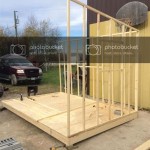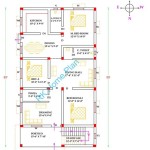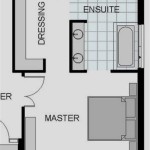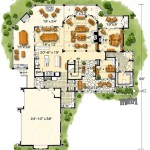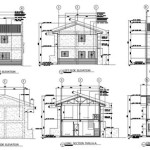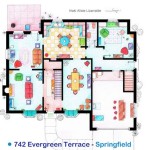Small Plantation House Floor Plans: Balancing History and Modern Living
Small plantation house floor plans represent a fascinating intersection of historical architectural styles and contemporary living needs. These designs, often inspired by the grand plantation homes of the American South, offer a unique aesthetic appeal while being adapted for smaller plots of land and modern family dynamics. This article will explore the key characteristics of these floor plans, discuss the considerations involved in adapting historical styles to modern living, and highlight some of the popular design elements that make these homes both charming and functional.
The term "plantation house" conjures images of sprawling estates with grand columns, wide verandas, and meticulously landscaped grounds. While a small plantation house cannot replicate the sheer scale of these historical counterparts, it can capture their essence through careful design choices. This often involves a focus on symmetry, classical detailing, and the incorporation of outdoor living spaces. Moreover, these floor plans prioritize space efficiency and functionality, ensuring that the resulting home, although smaller, delivers both comfort and style.
Understanding the Historical Context
To truly appreciate small plantation house floor plans, it's essential to understand their historical roots. Plantation homes were originally designed to serve as the center of large agricultural operations, often featuring distinct areas for living, working, and entertaining. The architectural styles prevalent in these homes varied depending on the region and the era, but common characteristics included a strong emphasis on symmetry, the use of classical orders in columns and ornamentation, and a focus on natural ventilation. Many were designed to maximize cross-ventilation to mitigate the summer heat, and deep porches provided shade from the harsh sun.
Georgian, Federal, and Greek Revival styles were particularly influential in the development of plantation architecture. Georgian homes, characterized by their symmetrical facades and formal layouts, often featured central hallways and evenly spaced windows. Federal-style homes, which followed the Georgian period, incorporated more delicate ornamentation and elliptical shapes. Greek Revival, popular in the 19th century, emphasized the use of columns and pediments inspired by ancient Greek temples. These iconic elements are often reinterpreted and scaled down in small plantation house designs.
Analyzing historical floor plans reveals much about the lifestyle of the inhabitants. Separate wings were frequently designated for different functions, such as the kitchen, dining room, and bedrooms. Large, open spaces were common for entertaining, while smaller, more private rooms provided retreats for family members. The layout often reflected a hierarchical social structure, with designated areas for servants and guests. Understanding this historical context allows architects and designers to thoughtfully adapt these elements for contemporary living, creating spaces that are both beautiful and functional.
Adapting Historical Styles to Modern Living
The challenge in designing small plantation house floor plans lies in adapting the grandeur of the historical style to the limitations of a smaller footprint. This often involves prioritizing key design elements and streamlining the overall layout. Open-concept living spaces are frequently incorporated to create a sense of spaciousness, while retaining the charm of traditional detailing. The use of high ceilings and large windows can further enhance the feeling of openness and light.
One crucial aspect of adaptation is the reinterpretation of outdoor living spaces. While a full-scale wraparound veranda may not be feasible, a smaller porch or patio can still provide a connection to the outdoors and create a welcoming atmosphere. The incorporation of outdoor kitchens, fireplaces, and seating areas can extend the living space and enhance the enjoyment of the surrounding landscape. The strategic placement of landscaping elements, such as hedges and trees, can also contribute to the overall sense of privacy and seclusion.
Modern conveniences, such as updated kitchens and bathrooms, are seamlessly integrated into the historical aesthetic. This often involves using traditional materials and finishes, such as hardwood floors, crown molding, and paneled walls, while incorporating modern appliances and fixtures. The careful selection of furniture and accessories can further enhance the historical look and feel of the home. The goal is to create a space that feels both authentic and comfortable, reflecting the charm of the past while meeting the needs of contemporary living.
Many small plantation house plans feature a central hallway or foyer, a design element borrowed directly from historical precedents. This central space serves as a focal point, connecting the various rooms of the house and providing a sense of formality and grandeur. Staircases are often prominently featured, adding architectural interest and visual appeal. The use of decorative lighting fixtures, such as chandeliers and sconces, can further enhance the elegance of the space.
Key Design Elements and Popular Features
Several key design elements are consistently found in small plantation house floor plans. These features contribute to the overall aesthetic and functionality of the home, capturing the essence of the historical style while adapting to modern living needs.
Symmetry is a defining characteristic of plantation architecture, and this is often reflected in the floor plan. The layout is typically organized around a central axis, with rooms arranged in a balanced and symmetrical manner. This creates a sense of order and harmony, contributing to the overall visual appeal of the home. Symmetrical facades and window placement are also common, reinforcing the classical aesthetic.
The incorporation of columns and pilasters is another popular design element. While full-scale columns may not be feasible in a smaller home, smaller columns or pilasters can be used to frame doorways, windows, or porches. These architectural details add a touch of elegance and sophistication, evoking the grandeur of historical plantation homes. The use of decorative moldings and trim can further enhance the classical look and feel of the space.
Large windows and high ceilings are essential for creating a sense of spaciousness and light. These features maximize natural light and ventilation, making the home feel more open and airy. The use of transoms above doors and windows can further enhance the flow of light and air. High ceilings also allow for the incorporation of more elaborate lighting fixtures and architectural details, such as crown molding and coffered ceilings.
Open-concept living spaces are frequently incorporated into small plantation house floor plans, particularly in the kitchen, dining, and living areas. This creates a more informal and relaxed atmosphere, while still retaining the charm of traditional detailing. Open layouts allow for greater flexibility in furniture arrangement and enhance the flow of traffic throughout the home. The integration of modern appliances and fixtures into the historical aesthetic is seamlessly achieved in these spaces.
Finally, the use of traditional materials and finishes is crucial for creating an authentic plantation house feel. Hardwood floors, paneled walls, and wainscoting are common choices, adding warmth and character to the home. The selection of paint colors and fabrics can further enhance the historical look and feel of the space. Neutral colors, such as whites, creams, and grays, are often used as a backdrop, with pops of color added through furniture, accessories, and artwork.
In conclusion, small plantation house floor plans offer a unique opportunity to combine historical architectural charm with the convenience of modern living. By carefully adapting key design elements and prioritizing functionality, these floor plans create homes that are both beautiful and practical. Understanding the historical context and adapting the design to contemporary demands allows architects and homeowners to create spaces that are both timeless and inviting.

House Plan 95058 Plantation Style With 4000 Sq Ft 4 Bed 3 Bat

Plantation Southern Style House Plans

5 Bedrm 7433 Sq Ft Southern Plantation House Plan 153 1187

Plantation Southern Style House Plans

Pin On Tiny Houses

House Plan 86274 Southern Style With 4790 Sq Ft 4 Bed Bath

Mcshane Barn Homes Floor Plans Home Design Closed Plan

Plantation Southern Style House Plans

House Plan 72149 Plantation Style With 4969 Sq Ft 3 Bed Bat

Small Traditional Style Ranch House Plan Angelina

